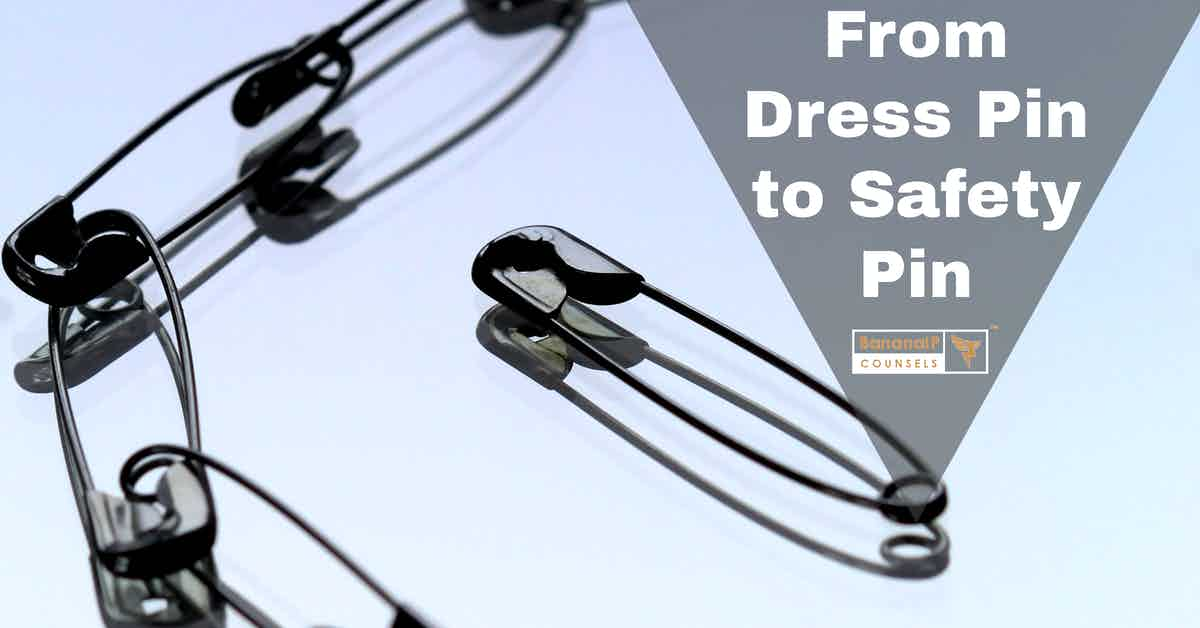This post was first published on 2nd September, 2014.
Inventive step / Non-Obviousness is one of the most important patentability criteria in almost all patent jurisdictions. Non-obviousness is the term used by the USPTO and is codified in 35 USC § 103. The requirement is that the claimed invention being patented should not be obvious, meaning that a “person having ordinary skill in the art” should not be able to easily guess or put two or more things together to arrive at the invention seeking a patent grant.
Now, let’s discuss the Inventive step / Non-Obviousness criteria with an interesting example relating to the Dress Pin invention wherein an improved patent relating to the Safety Pin is confirmed as having inventive step in comparison with prior art inventions.
Walter Hunt, an American mechanic, received a patent (US Patent No. 6,281) for the Dress Pin invention on April 10, 1849. Hunt’s pin was made from one piece of wire which was coiled into a spring at one end and a separate clasp and point at the other end. However, this Dress Pin wasn’t the first pin, but it was the first one with a clasp to keep from poking. The first pin was invented by the ancient Greeks, Italians and Sicilians. It had two things wrong with it: 1) It had no clasp and 2) It had no spring at the end to help put it in place. Hunt patented the product as a Dress Pin.
The story of the invention of the Dress Pin is quite interesting. One afternoon, Hunt was in deep thought as to how to pay back a US$ 15 debt to his friend. While discussing his financial issues with a friend, Hunt was anxiously twisting a piece of wire in his hand when he suddenly came up with the idea for a pin. Hunt’s creation improved upon existing pins in two important ways. First, the point was completely covered when it was closed so it was truly safe. Second, Hunt added a circular twist at the bend of the pin to act as a spring that creates the tension to hold it in place. He later sold his patent rights to the Dress Pin to W R Grace and Company for US$ 400. Unfortunately, Hunt failed to realize that in the following years, W R Grace and Company would make millions of dollars in profits from his invention.
A wonderful improvisation was made to Hunt’s invention of the Dress Pin. Almost 150 years later, in the year 1994, an American inventor Michail A Mussell made an improvement on Hunt’s Dress Pin to make it safer. Mussell’s product entitled Open spring safety pin (US Patent No. 5,303,456) was patented on April 19, 1994. Mussell’s invention relates to an improvisation to the Safety Pin, the improvement being specifically that the coils of the torsion spring are spaced apart so as not to damage fabric threads therein. Even after a century of having the issue of Safety Pins pinching the fabric, the improvement in the Safety Pin so as not to pinch threads of the fabric was not obvious to manufactures of Safety Pins. Hence, on a lighter note, we can say that it is obvious that Mussell brings out the Inventive Step in his Open spring safety pin invention!



